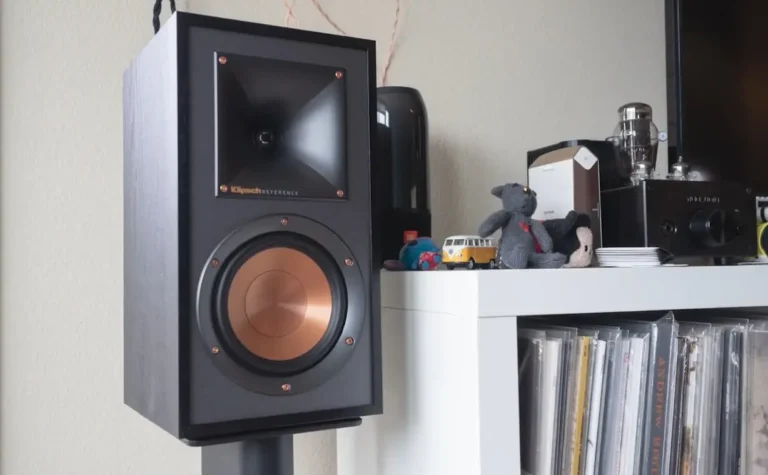How to Connect 4 Speakers to a 2-Channel Amplifier: Complete Wiring Guide
As we all know, connecting 4 speakers or 8 speakers to an amplifier is quite a difficult task, especially when we want to connect more speakers than the channels of our amplifier. Don’t worry, however, by understanding impedance and putting in the right approach and some wiring configurations, you will be able to connect four speakers to a two-channel amplifier without causing any damage to your amplifier or speakers and without compromising sound quality. In this guide, I will tell you by step-by-step process that How To Connect 4 Speakers To A 2-channel amplifier.
First Things First: Understanding the Impedance: Before I tell you the connection process, it is important that you first understand impedance and its implications when you are connecting 4 speakers to a 2-channel amplifier.
What Is Impedance?
Impedance is the measure of opposition to the flow of alternating current (AC) in an electrical circuit,
measured in ohms. Most amplifiers are designed to operate within a specific impedance range; typically, the impedance of almost all amplifiers is 4 ohms to 8 ohms per channel.
You may Also Like: Best Amplifier For Gym
Next step: What are Series and Parallel Wiring

Series Wiring:
series wiring is that the speakers are connected in a series configuration, and the positive terminal of
One speaker is connected to the negative terminal, and the negative terminal of that speaker is connected to a positive terminal of another speaker, and so on.
In the end, the remaining positive terminal of the first speaker and the negative terminal of the last speaker are then connected to your amplifier’s positive and negative terminals. This creates a single
path for the current to flow through all the speakers you connected.

Parallel Wiring:
Parallel wiring is in the whole speaker’s configuration; all the speakers are connected directly to the terminals of the amplifier. This means that you will connect all positive terminals of all the speakers and connect them to the positive terminal of your amplifier, while all negative terminals of
the speakers are similarly connected. Each speaker has its own path for current flow.
And when connecting your speakers in parallel or series wiring, the total impedance of your speakers changes. In a parallel connection, the total impedance of your speakers decreases, while in a series connection, it increases. It is essential to ensure that the total impedance load presented to the amplifier falls within its specified range to avoid any overheating, distortion, or damage to your loving amplifier.
Now A Step-by-Step Guide How to Connect 4 Speakers to a 2-Channel Amplifier:
Check Amplifier Specifications:
First of all, carefully check the specifications of your amplifier to determine its impedance range per channel. This information will guide you in choosing the appropriate wiring configuration for connecting 4 speakers to your 2-channel amplifier.
Select Speaker Wiring Configuration:
While connecting 4 speakers to your 2-channel amplifier, you have two primary wiring configurations to choose from: series-parallel and parallel-series. Each configuration offers different impedance options, so it is very important to select the one that matches your amplifier’s requirements.
Series-Parallel Wiring Configuration:
First: Divide your speakers into two pairs, like two speakers for each amplifier channel.
Second: Now connect the positive terminal of one speaker pair to the positive terminal of one channel of
your amplifier.
Third. Then connect the negative terminal of the same speaker pair to the negative terminal of the same amplifier channel.
Fourth: Repeat the steps third and fourth for the second speaker pair, connecting them to the second amplifier channel.
Parallel-Series Wiring Configuration:
First: Divide your speakers into two pairs. Like two speakers for each amplifier channel.
Second: Now connect each pair of your speakers in parallel series by connecting the positive terminals of both speakers and the negative terminals, as I mentioned.
Third: Now connect the two speaker pairs in series by connecting the positive terminal of one pair to the positive terminal of the amplifier’s first channel.
Fourth: Connect the negative terminal of the same pair to the positive terminal of the second pair.
Fifth. Connect the negative terminal of the second pair to the negative terminal of the amplifier’s second channel.
Double-Check Wiring Connections:
Now, before turning on your amplifier, it is important to double-check all the wiring connections you configure to ensure that they are secure and correctly configured according to the selected wiring configuration. Any mistakes or damage in wiring can lead to improper impedance loads and potential damage to your amplifier.
Power On and Test:
Once you have verified all your connections, power on your amplifier and test the sound output from each speaker you connected. Listen for any distortion in sound, which may indicate that wiring issues are there, or impedance mismatch, which may result in damage or overheating of your amplifier.
Conclusion:
While connecting 4 speakers to a 2-channel amplifier, you must have the proper knowledge of impedance and the wiring setup to ensure the best performance and to avoid any damage to your amplifier because of bad wiring. By following the step-by-step guide as written above and selecting the appropriate wiring configuration for your amplifier’s specifications, you can achieve a balanced audio setup for your sound system.
Note: if you don’t know or have any knowledge about impedance, it is better to use the user manual of your amplifier and speakers for specific instructions, or you can get some guidelines from someone expert. With the right approach, you can enjoy immersive sound quality and maximize the potential of your audio system.
Still unsure which method is right for you? Drop your amp and speaker model in the comments, and we’ll help you wire it correctly!







